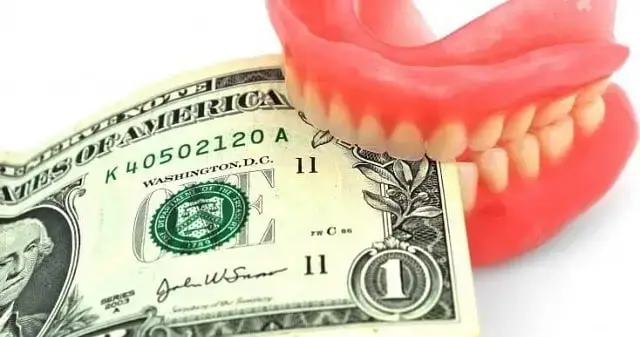When The Profitable Dentist Magazine invited me to delve into the topic of “Financial Wellness,” I initially hesitated, unsure of where to start or why it mattered. Like many others, I once believed it was solely about having enough funds to run a dental practice with a bit left over. However, over the years, I’ve come to understand that Financial Wellness encompasses far more, and I’ve been inadvertently assisting practices in enhancing theirs for decades.
Financial wellness, also known as financial well-being, involves fulfilling your present and ongoing financial obligations, feeling secure about your financial future, and having the freedom to make financial choices. It goes beyond the mere accumulation of money; it is about effectively managing the money flowing through your practice. It entails prudent cash flow management, savings building, credit and debt management, and navigating unexpected financial challenges and long-term objectives. At its core, it revolves around the skillful management of “profit.”
Regrettably, some dentists perceive “profit” as a negative term, fearing that it implies a compromise in patient care. Profit is the most critical indicator of a financially sound business, including dental practices.
I’ve recognized that my role in enhancing my clients’ financial wellness primarily comes in two essential forms: maximizing collections for services they are already providing and coaching them on expanding production and collections into related procedures. Fortunately, both involve the exciting realm of treatment known as Oral Systemic Health.
As science advances and dental professionals, as well as patients, acknowledge the connection between oral health and systemic health, it is crucial for practices to evolve their financial systems to keep pace with their clinical growth.
Every day, I encounter practices that submit claims for implant procedures, periodontal treatments, and sleep apnea treatments under dental codes, only to have these claims rejected or to write off significant collections. Both scenarios are detrimental to the practice’s financial health when, in reality, proper filing of these claims would result in coverage by the patient’s medical insurance.
The positive side of mastering the filing of medical claims alongside dental claims is that it enables practices to integrate and receive compensation for the treatment of systemic conditions and diseases affected by compromised oral health, such as Alzheimer’s disease, chronic kidney disease, diabetes, osteoarthritis, osteoporosis treatments, radiation therapies, Sjögren’s disease, sleep disorders, hypophosphatasia, X-linked hypophosphatemia, and HIV.
Considering that 80% of American adults suffer from some form of periodontal disease, which serves as the foundation for many of these conditions, dental professionals are increasingly asking, “How can we provide better patient care in our practice?” The answer lies in understanding how to receive proper compensation for these groundbreaking treatments.
In today’s landscape, many dental insurance plans offer additional benefits for patients with a medical diagnosis. Therefore, it is imperative to collaborate with a patient’s medical doctor and adapt our communication to reflect the dental/medical connection.
While patients must retain ownership of their health, dentists can help them comprehend the reasons behind discussing seemingly unconventional treatments in a dental setting. This shift in dynamics presents exciting opportunities to leverage dentists’ expanding skills and enhance overall patient health and wellness.
Fortunately, many tools required for collaborative dental/medical diagnosis and treatment are often readily available in dental practices, including oral cancer tools, X-rays, CBCT scans, saliva testing for pH levels, oral DNA, and A1C blood testing.
Initiating a dental/medical dialogue with patients by educating them about the body’s areas influenced by the oral cavity can be highly productive. The American Academy of Oral Systemic Health (AAOSH) offers a helpful graphic for this purpose.
Furthermore, adhering to the Dutch Guidelines for Dental Education published in 1997, recognizing a patient’s medical history as a vital part of their dental history can significantly enhance a dentist’s awareness of diseases and medications that may impact dental treatment. The importance of patients’ medical histories is expected to grow as more medically complex patients visit dental practices.
To streamline this collaboration and make insurance reimbursement more predictable, dentists should consider using SOAP forms (Subjective, Objective, Assessment, and Plan). These forms facilitate information sharing among different care providers and insurance companies, as they are structured in a universally understandable format.
It’s intriguing how dentists often focus on their patients’ “wellness” but sometimes overlook their own. What’s even more fascinating is the evolving definition of wellness in the dental profession. While the physical and emotional toll of dentistry is evident, financial wellness can be the most influential factor for both dentists and patients alike.
In the words of my friend, Dr. Woody Oakes of The Profitable Dentist Magazine, “Profit is not a four-letter word.” Dentistry has long grappled with the financial aspects of providing optimal treatment. Perhaps it’s time to realize that maximizing reimbursement from patients’ dental insurance and venturing into the exciting realm of Oral Systemic Health not only offers captivating treatment opportunities but also engages patients more effectively, resulting in more predictable collections, ultimately making dentistry a more fulfilling and healthier career.
References:
1. A Pilot Study of Integration of Medical and Dental Care in 6 States (cdc.gov)
https://www.cdc.gov/pcd/issues/2021/21_0027.htm
https://permanente.org/about-us/our-care-model/
3. The importance of adequate medical history taking in dentistry] – PubMed (nih.gov)
https://pubmed.ncbi.nlm.nih.gov/8345319/




